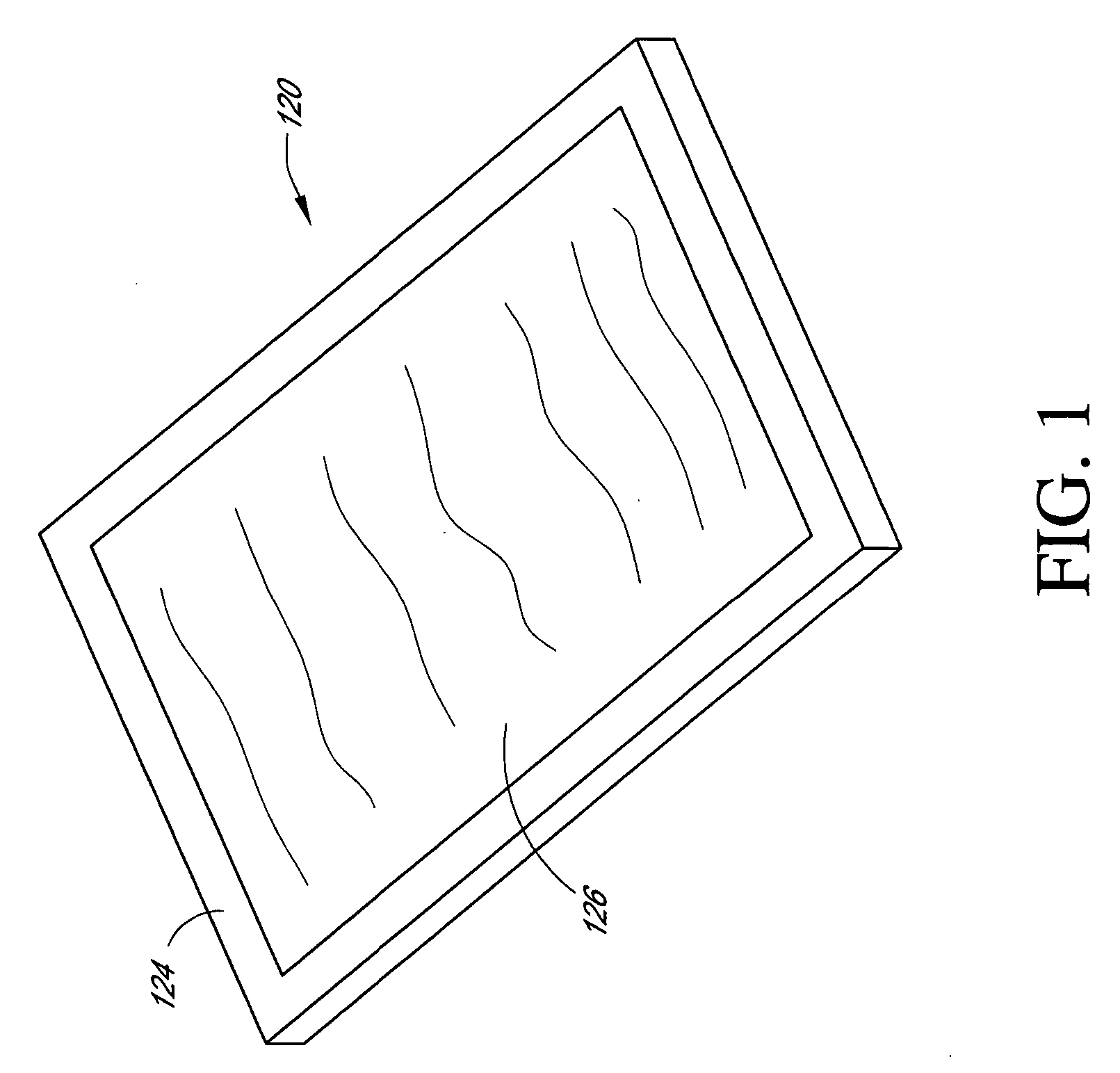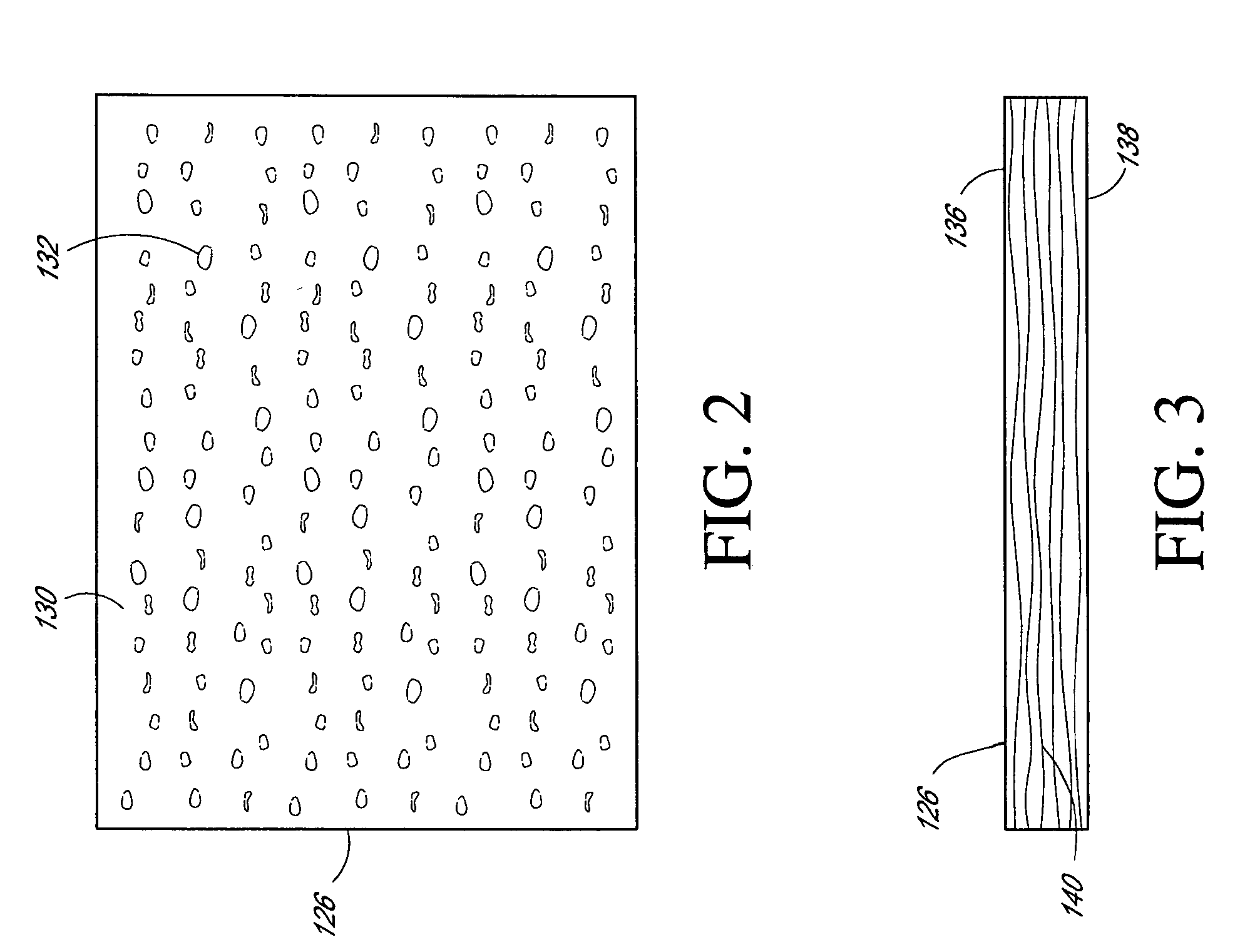System and method for removing pollutants from a roadway
a technology of pollutants and roadways, applied in the direction of combustion air/fuel air treatment, combination devices, dispersed particle filtration, etc., can solve the problems of hydrocarbons and toxic metals, water quality problems, accumulation of pollutants on roadway surfaces,
- Summary
- Abstract
- Description
- Claims
- Application Information
AI Technical Summary
Benefits of technology
Problems solved by technology
Method used
Image
Examples
example 1
[0039]In order to prepare a filter substrate for use with the invention, an infusion solution is prepared from a suitable solvent and the absorbent composition. In this example a solution is prepared from 90 w / w 99.9% acetone and 10 w / w absorbent composition, which is the reaction product of 31% isobutyl methacrylate, 31% ELVACITE 2045, and 66% linseed oil. The absorbent composition is added to a closed explosion-proof mixer with the acetone and mixed for 12 hours or until the solution becomes homogeneous. The substrate in this Example is a nonwoven polypropylene, viz. the VERASPUN material of Yarorough & Co., Inc. of High Point N.C. This material has a weight of 1 oz. / square ft. The substrate material is immersed in the infusion solution until saturated, then removed and excess liquid allowed to drip off. The material is then placed in a convection oven at 110 to 120° F. until acetone free. The material is then cured at room temperature for one week. The resulting material is then ...
example 2
[0057]A pollutant trap 120 was affixed to the wheel well of a truck, and the vehicle was driven in Hawaii under wet roadway conditions. After driving about 150 miles, the pollution trap 120 was removed and analyzed for the presence of hydrocarbons. The Food Quality Lab of Honolulu, Hawaii was employed to independently analyze the amount of petroleum hydrocarbons that had accumulated on the pollution trap.
[0058]The data showed that a significant amount of petroleum hydrocarbons had accumulated on the pollution trap during the brief testing period. These results verified that the pollutant trap 120 significantly reduced the amount of roadway pollutants on a wet roadway surface. The following example describes a test that can be performed to verify that the pollutant trap 120 can remove roadway pollutants under dry road conditions, as well.
example 3
[0059]A pollutant trap 120 is applied to the wheel well of a truck, and driven in Hawaii under dry roadway conditions. After driving about 150 miles, the pollution trap 120 is removed and analyzed for the presence of hydrocarbons. The Food Quality Lab of Honolulu, Hawaii can be employed to analyze the accumulation of roadway pollutants on the pollution trap. It will be determined that the pollution trap also significantly reduces the amount of roadway pollutants on dry roadway surfaces. The following example describes another test that verified that the pollutant trap 120 effectively removes roadway pollutants.
PUM
| Property | Measurement | Unit |
|---|---|---|
| temperature | aaaaa | aaaaa |
| temperature | aaaaa | aaaaa |
| temperature | aaaaa | aaaaa |
Abstract
Description
Claims
Application Information
 Login to View More
Login to View More - R&D
- Intellectual Property
- Life Sciences
- Materials
- Tech Scout
- Unparalleled Data Quality
- Higher Quality Content
- 60% Fewer Hallucinations
Browse by: Latest US Patents, China's latest patents, Technical Efficacy Thesaurus, Application Domain, Technology Topic, Popular Technical Reports.
© 2025 PatSnap. All rights reserved.Legal|Privacy policy|Modern Slavery Act Transparency Statement|Sitemap|About US| Contact US: help@patsnap.com



